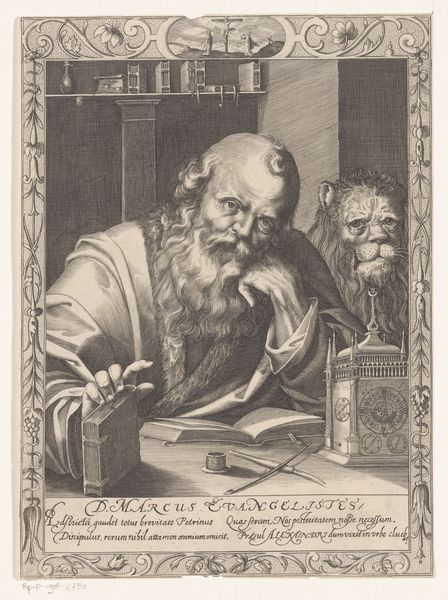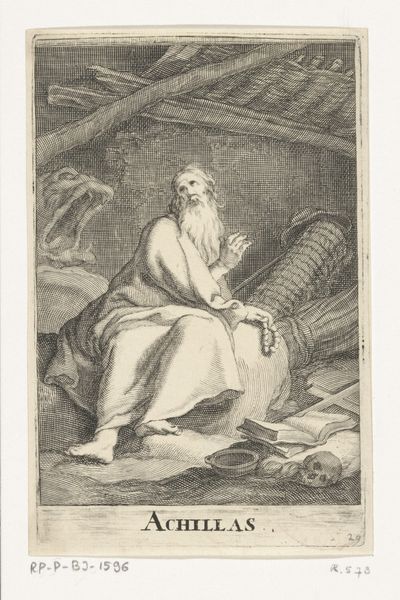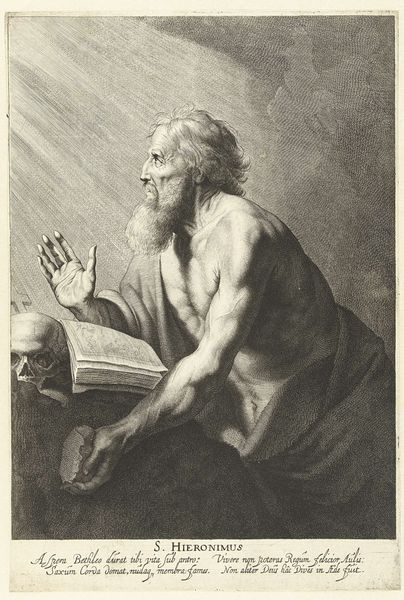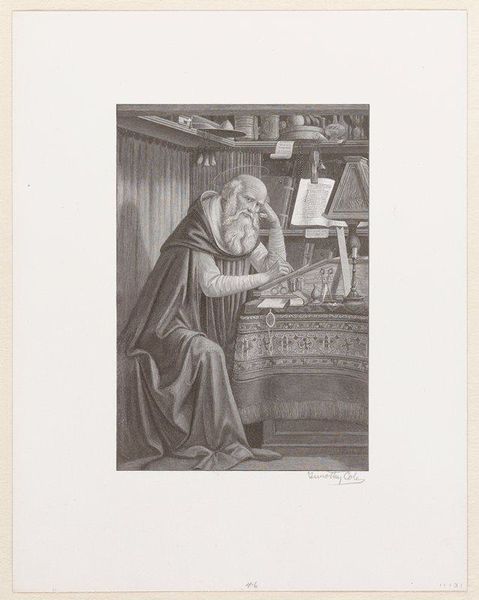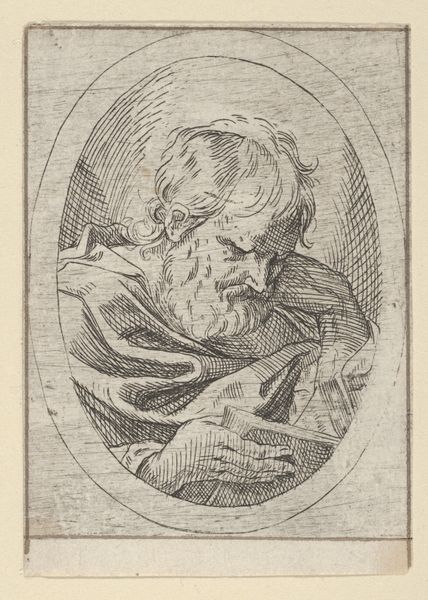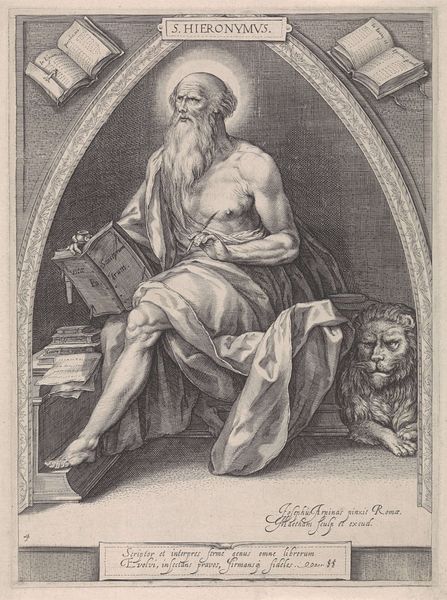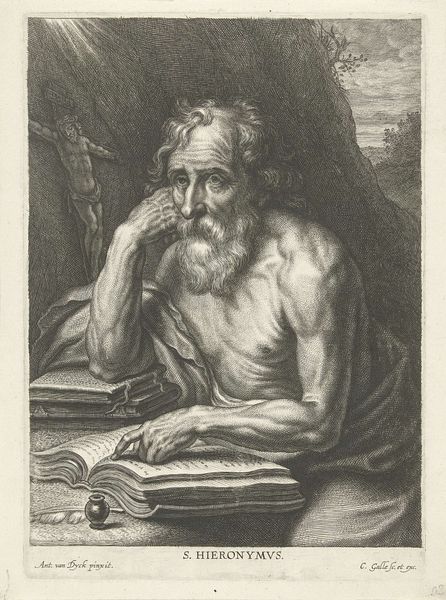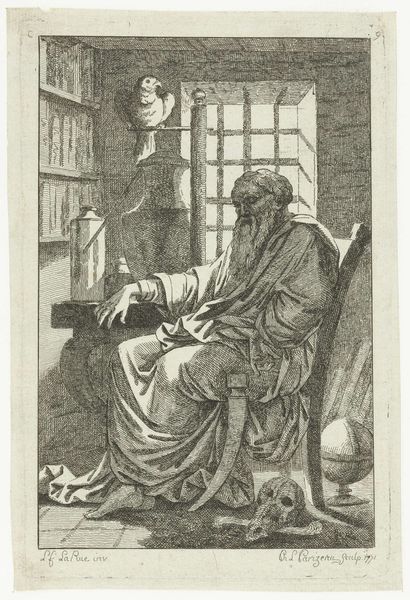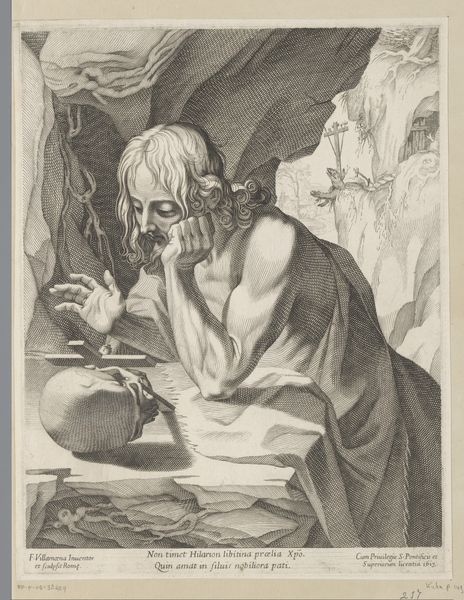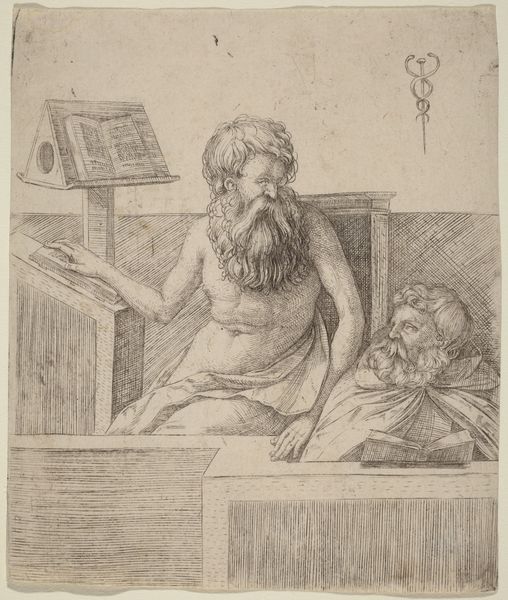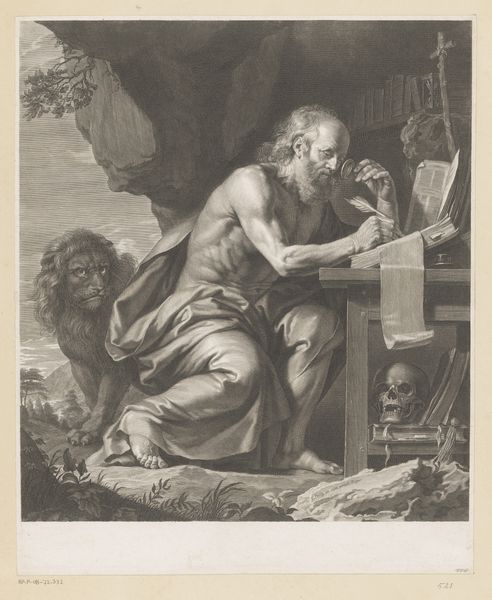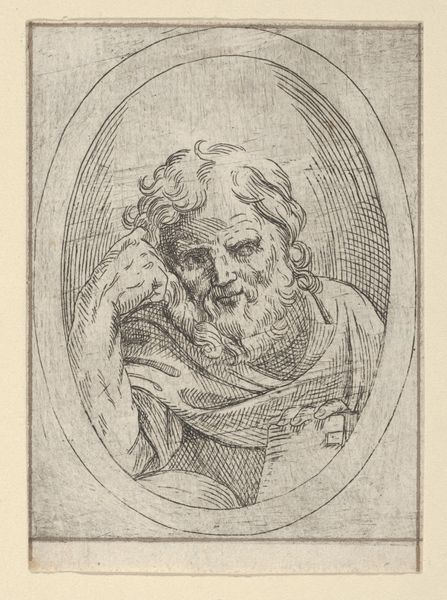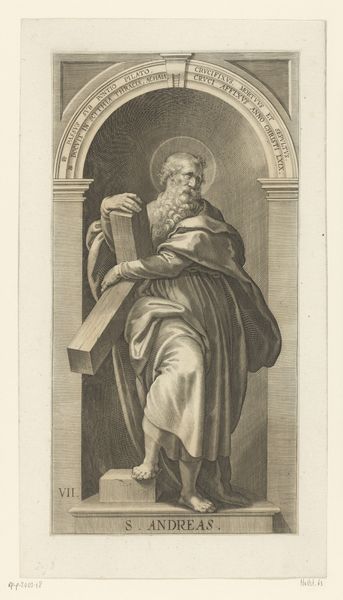
drawing, print, paper, engraving
#
portrait
#
drawing
#
baroque
# print
#
paper
#
11_renaissance
#
vanitas
#
chiaroscuro
#
line
#
history-painting
#
academic-art
#
engraving
Dimensions: 265 × 195 mm (plate); 320 × 243 mm (sheet)
Copyright: Public Domain
Curator: Standing before us is Antoine Masson’s engraving, “Saint Jerome,” created in 1693. What are your first thoughts on it? Editor: The immediate sense I get is one of contemplation, even resignation. The starkness of the print and the clear lines outlining an older, burdened figure invite a consideration of mortality. There's a striking quiet intensity to the scene. Curator: It’s fascinating to view “Saint Jerome” through that lens, considering the socio-political context in which Masson was working. The Baroque era saw a fervent revisiting of religious themes, with a clear eye toward power structures and the Church’s influence. Representations of saints provided ways to understand authority, piety, and knowledge, especially how these qualities were projected. Editor: I can see how this print engages with established archetypes. Jerome, with his scholarly pursuit symbolized by the books, juxtaposed against vanitas motifs like the skull, seems to invite analysis through our contemporary frameworks about intellectualism and the relationship with death as the great equalizer. Are we invited to consider mortality here as it pertains to issues of race and class? How are we positioned to consume this portrait? Curator: Precisely! Masson has situated Saint Jerome within the accepted aesthetics of his time. The chiaroscuro effect, that dramatic use of light and shadow, certainly pulls from Baroque sensibilities and focuses our attention onto key symbolic areas, encouraging an emotive rather than documentary interaction. In art of the period, these themes serve purposes beyond pure religious veneration; these images support, or challenge, the prevailing power paradigms, for instance. Editor: It definitely makes one think about the construction of holiness itself, and how academic artistic production shapes our understanding of the divine. I think we can draw some fascinating lines between representations of saints and today's cult of celebrity, and what sorts of socio-economic conditions permit them. Curator: Agreed, there’s plenty to dissect when exploring images like these. It’s helpful to not simply view them through our modern values, but also explore what meanings were built into its visual language originally. Editor: Absolutely, the social context of art creation and consumption must be taken into account. Thank you for that enlightening viewpoint. Curator: Thank you, understanding and questioning visual language of the artwork creates further avenues of consideration.
Comments
No comments
Be the first to comment and join the conversation on the ultimate creative platform.

